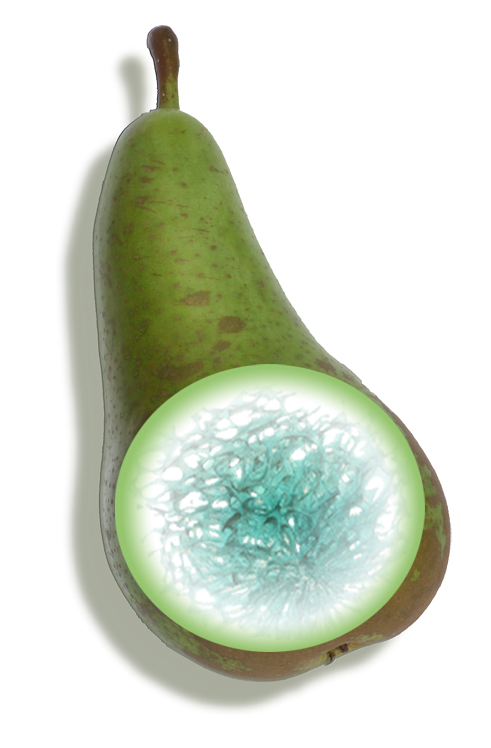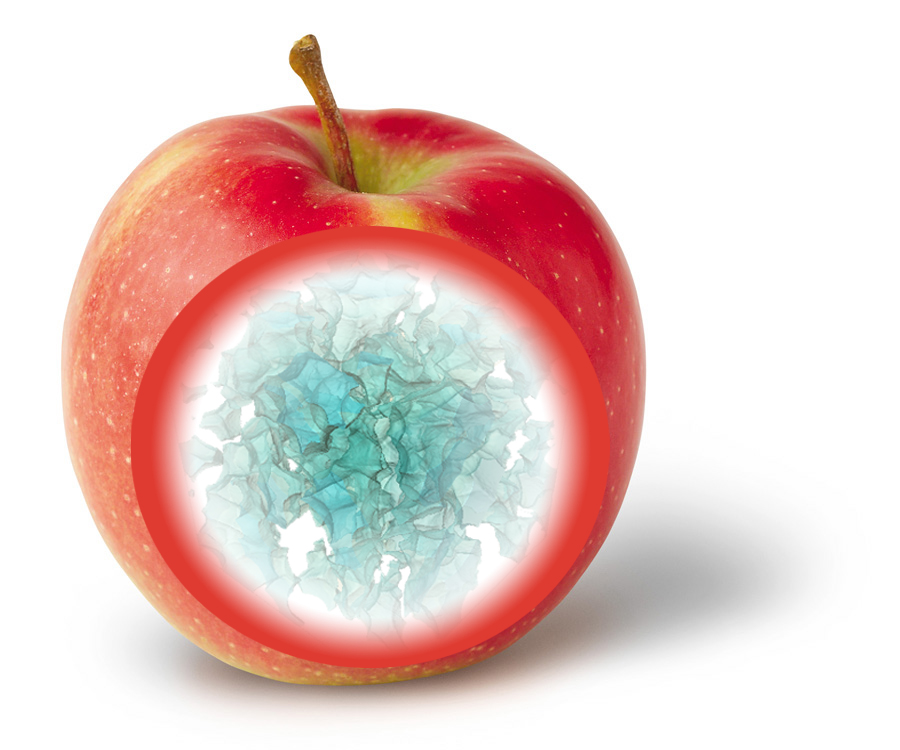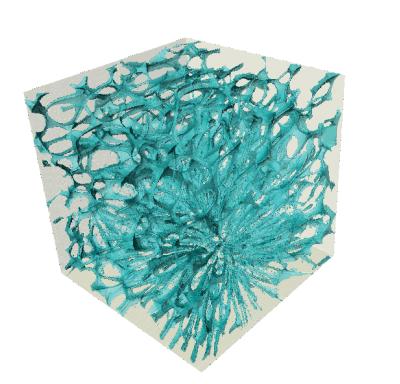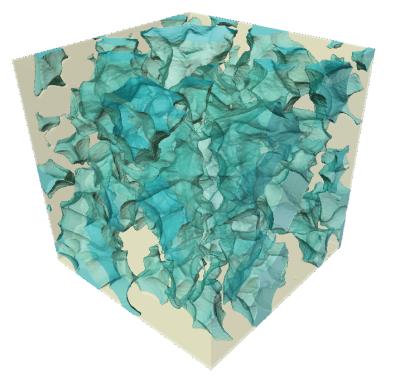- Home
- News
- General News
- Scientists see health-determin...
Scientists see health-determining air paths in fruit
10-07-2008
PRESS RELEASE - Pears and apples contain air pathways to “breathe”. The pathways are microscopically small structures for oxygen supply and are key elements in determining the fruit’s health. Researchers from the Catholic University of Leuven in Belgium and the European Synchrotron Radiation Facility (ESRF) have visualized them for the first time, therefore proving their hypothesized existence. In apples, the pathways appear as irregular cavities between cells, whilst in pears they have the shape of tiny interconnected channels. These results allow a better understanding of how the fruit degrades after harvest and provide a scientific explanation of the everyday experience that pears are more susceptible to decay during storage.
Share
Apples and pears continue to “breathe” after picking. To keep the fruit healthy, a minimum level of oxygen must be supplied to all cells of the fruit. If this does not happen, internal browning disorders appear and fruit quality decreases. This is why fruit is stored in dedicated cool rooms with accurate control of oxygen levels.
 |
 |
Montage of a pear and an apple and their inner structure, including the air pathways. Credits: P. Verboven.
The correct oxygen concentration is related to the complex mechanisms of gas exchange, respiration and fermentation in the fruit. Restricted gas exchange leads to too low a level of oxygen inside the cells. Three-dimensional images of the fruit microstructure help to determine and explain gas exchange rates and when fruit cells start to die and browning initiates. Such imaging is not easy as fruit contains a lot of water and the resolution and contrast of conventional medical 3-D scanners is insufficient.
 |
|
 |
|
|
Pear's (above) and apple's (below) inner structure in 3D. Credits: P. Verboven. |
The Leuven team used the European Synchrotron Radiation Facility in Grenoble to perform tomographic imaging of fruit samples. As the researchers report in the recent issue of Plant Physiology, the powerful equipment produces 3-D images that are accurate down to and below 1/1000 of a millimeter, with sufficient contrast to separate out void spaces from cells. The images are now used in computer models to calculate oxygen concentration in individual cells of fruit tissues.
“It is still unclear how airways in the fruit develop, and why apples have cavity structures and pears micro-channel networks”, explains Pieter Verboven, from the Catholic University of Leuven and corresponding author of the paper. However, the results do help explain why pears are so prone to decay during storage: “The micro-channels are so small that oxygen supply to the fruit core is very limited and cells are quickly ‘out of breath’ when oxygen levels fall below the safety threshold”, he asserts.
Reference:
Verboven, P. et al., 3-D gas exchange pathways in pome fruit characterized by synchrotron X-ray computed tomography. Plant Physiol. 147: 518-527 (2008). OPEN ACCESS ARTICLE.
MOVIES
Movie pear structure: 3-D rendering of the void network of a pear cortex. While the voids in the apple are large and form an incompletely connected network, those of the pear are very small and form a complete network throughout the cortex sample without preferential direction. Credits: Plant Physiology, American Society of Plant Biologists.
http://www.esrf.fr/Apache_files/press/FRUIT/MovieS2bPEAR.avi
Movie apple structure: 3-D rendering of the void network of an apple cortex. While the voids in the apple are large and form an incompletely connected network, those of the pear are very small and form a complete network throughout the cortex sample without preferential direction. Credits: Plant Physiology, American Society of Plant Biologists.
http://www.esrf.fr/Apache_files/press/FRUIT/MovieS2aAPPLE.avi
Movie apple single cell: 3-D rendering of single cells (in yellow) of apple with adjacent voids (in blue). Images obtained from phase contrast tomography at 700 nm resolution. A small number of larger voids connect in an irregular disconnected pattern to the apple cell.
http://www.esrf.fr/Apache_files/press/FRUIT/movie_applepore.mpeg
Movie pear single cell: 3-D rendering of single cells (in yellow) of apple with adjacent voids (in blue). Images obtained from phase contrast tomography at 700 nm resolution. The voids lie like wires of a tight net around the small pear cell.
http://www.esrf.fr/Apache_files/press/FRUIT/movie_pearpore.mpeg
For more information, please contact Montserrat Capellas, press officer, at e-mail or +33476 88 26 63.



